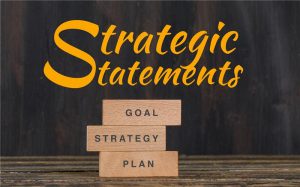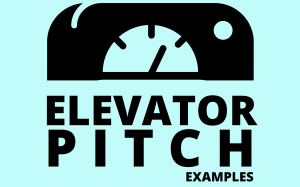Ideas always have a lot of uncertainty involved and little data to back them up. Thus, prioritizing ideas evaluation and making decisions on which ones to implement right away, which ones to test or pilot and which ones to keep for later will put you in a bit of a pickle.
Idea evaluation definition revolves around one of the most complex and demanding tasks in idea management and, innovation management. So, let’s discuss how to make idea evaluation work for you.
Ins and Outs of Ideas Evaluation
-
Evaluating innovation is a bit of a paradox
When it comes to “proper innovation” – not simply incremental innovation – it’s virtually impossible to evaluate ideas or initiatives by using metrics.
Therefore, the first thing you should do is to make a clear distinction between the two and to treat them separately.
-
Evaluation is a tool for making decisions, not a decision-making system
In most organizations, it’s usually one person or a group of people that makes the decision, and evaluation is simply a tool for providing them with the best possible information for making that decision.
When it comes to evaluating business ideas, a common practice is to use many different criteria, referred to as metrics.
These metrics can be either qualitative or quantitative. So, these metrics can then be combined to form a numeric rating for the idea, known as the score.
-
Evaluation should be transparent

You should always strive to evaluate ideas transparent amongst those who are participating in the ideation.
Therefore, metrics used for evaluating ideas should be aligned with your organization’s strategic or tactical priorities.
Idea Evaluation Process or matrix
Ideas evaluation involves assessing many factors. How much will the idea cost to run and implement? What impact will it have on your business and the bottom line? How long will it take to implement?
Here, we outline the five steps that help in building your ideal evaluation matrix.
Select the ideas to put through your matrix
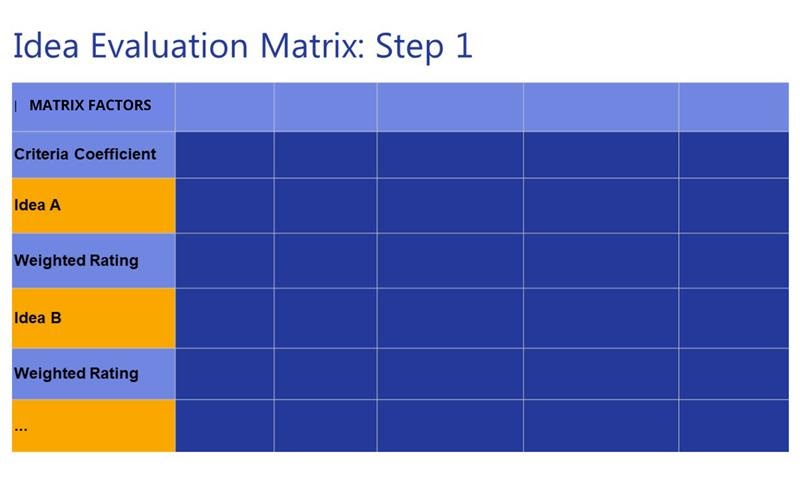
An idea matrix can work effectively with many ideas, but if you’ve hundreds of ideas to evaluate, you’ll need to ’filter’ those ideas to select the most worthy ones.
You can use your crowd of idea generators as the first filter, allowing everyone to vote, rate, and comment on the ideas that have been submitted.
The second step in building the matrix is to decide which criteria to use for scoring your ideas such as time, cost, potential impact, monetary impact, how much the organization is affected, strategic goals, and ownership.
Choose your ranking criteria
The second step in building the matrix is to decide which criteria to use for scoring your ideas such as time, cost, potential impact, monetary impact, how much the organization is affected, strategic goals, and ownership.
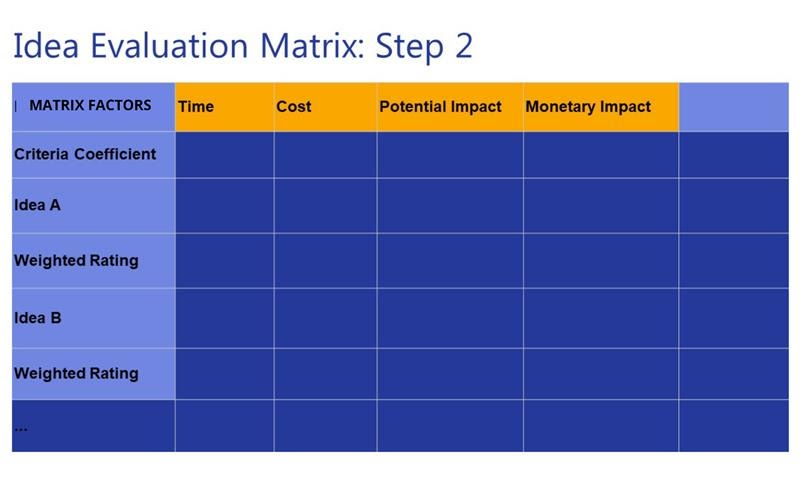
Rate your criteria
Next, you’ll need to establish a rating scale that is a “criteria coefficient” for each of the criteria you have chosen for your matrix. The scale will go from 1 meaning low importance to 5 with high importance.

Score each idea
Once you have rated your criteria, you can move on to scoring each idea. This is based on the criteria you have chosen. Score from 1 to 5 (1 being the least effective, 5 being the most).
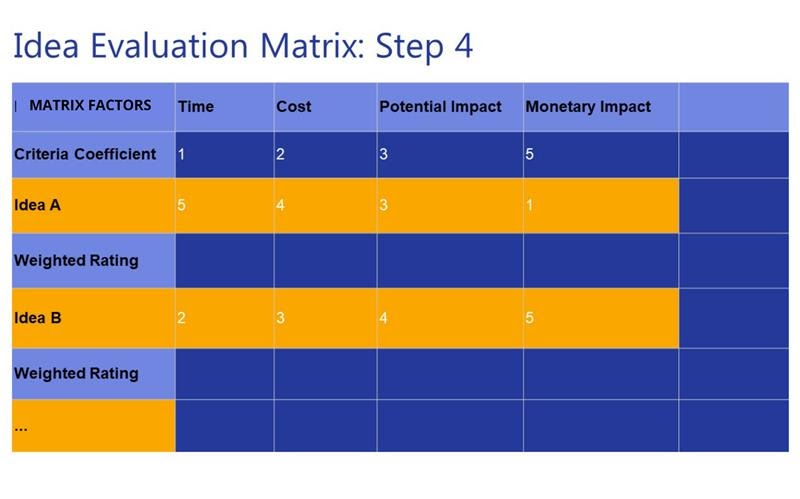
Calculate each idea’s weighted score

So, finally, you should calculate each idea’s weighted score. This is for each of the criteria. So, first, you need to find the weighted score for each idea in each of your chosen criteria.
To do that, multiply the ranking that you have given to each criterion. This takes place with the score you’ve awarded for each idea evaluation in that particular criterion.
Sum the weighted scores and compare

The final step is to calculate the sum of weighted scores across each criterion for every idea in your matrix. Also, write these scores in the final column of the matrix.
Hence, you can then compare these scores to evaluate which ideas are the most viable (those with the highest scores) and which are the least.
Ideas Evaluation Methods
Crowdsourced Ideas Evaluation
It’s highly recommended to use the crowdsourced approach when evaluating the feasibility of business ideas related to existing customer-facing processes.
Additionally, this helps to engage as many people from the front line as possible to see if the idea is useful for the customers.
Expert Group Ideas Evaluation
It makes sense to ask experts for their opinion if the idea is highly technical or complex.
So, this is usually a good balance between avoiding individual biases but still keeping the evaluations relevant.
Individual Ideas Evaluation

Occasionally there will be ideas that others might simply not understand without the kind of insight a single person in the organization has.
In that case, it’s best to trust in the research or insight of these individuals and proceed to test these ideas without caring too much about what the evaluation would say.
Evaluation Criteria
There is an endless number of variables at play when it comes to choosing the metrics that represent your evaluation criteria, such as the types of ideas to be collected, your industry, and your strategic objectives.
You’ll have to try to balance between making the evaluation of the idea too simplistic, or too complex.
Thus, always start on the side of simplicity and continue with just a few simple metrics.
Conclusion
Developing your idea evaluation process should be an iterative process.
Remember that evaluation is just one part of effective innovation management. Also, it can be a helpful tool, it’s not a substitute for actually testing or piloting the ideas!





